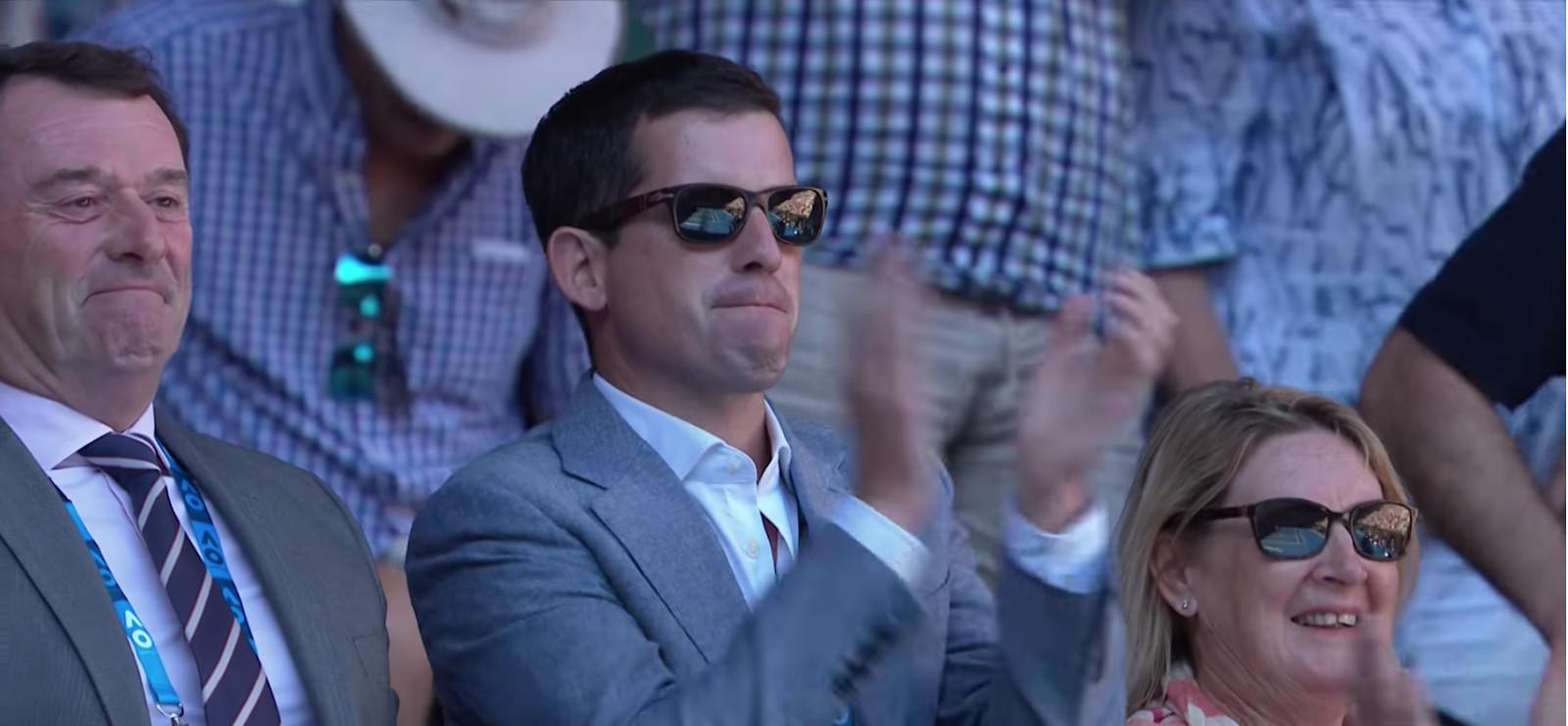For the past week and a half, Roger Federer has looked, well, Federeresque. As Thursday turns into Friday in America, he’ll play in his 14th Australian Open semifinal. And he is the clear favorite to win his 20th major in Melbourne, but at this point, that’s not much of a story at all.
The story of this tournament has been chaos. Though Federer, top-seeded Simona Halep, and second-ranked Caroline Wozniacki all reached the penultimate rounds of their respective draws, the favorites beneath them have been jettisoned from the tournament both by hard-fought upsets and stunningly easy losses.
The losses were felt quickest stateside, as most noteworthy Americans dropped their openers. Venus Williams, 2017 U.S. Open champion Sloane Stephens, eighth-seeded Jack Sock, 16th-seeded John Isner, and last year’s semifinalist CoCo Vandeweghe all lost first-round matches to unranked opponents. Madison Keys, coming off a runner-up finish in Queens, won eight straight sets en route to the quarterfinals before winning just three games in a 51-minute dismantling at the hands of Angelique Kerber, who won the tournament in 2016 but struggled last year and had dropped to 16th in the world before Australia.
In the men’s draw, the anointed Kids in Waiting also fell short. Nick Kyrgios, who came into the tournament riding high from a win in Brisbane, performed the best, losing a grueling four-set, three-tiebreak match to third-seeded Grigor Dimitrov in the fourth round. Dominic Thiem didn’t have such a good excuse, losing his round of 16 match to an unseeded American Pizzagate truther named Tennys Sandgren, who had upset an injured Stan Wawrinka earlier in the tournament. Alexander Zverev squandered a two-sets-to-one lead against 21-year-old Hyeon Chung, as the German mentally unraveled and dropped his vaunted serve three times in an 0-6 deciding set.
Chung, who defeated a probably-still-injured Novak Djokovic and Sandgren in his next two matches, will play Federer in the semifinals. The bespectacled Korean won his first ATP tournament last year at the Next Gen ATP Finals, a new World Tour Finals–like event for the top under-21 players. At this time last year, Chung was still dabbling in the Challenger Tour, and hadn’t made it past the third round of a major or a Masters event, but now he has made a deeper run at a major than either Kyrgios or Zverev ever have.
“I’ve never played Chung or [Kyle] Edmund, so it’s great to see new names on the scene,” Federer said after his quarterfinal dismantling of Tomas Berdych. “The way both of them made it to the semis is highly impressive. The Chung-Djokovic match was the match I watched the most. Chung is very talented. He’s clearly got nothing to lose. I will tell myself the same, and we’ll see what happens.”
On the other side of the draw, facing the eternally present Marin Cilic, is Kyle Edmund, a 23-year-old whose brand is best described as “English normcore.”
Edmund is ranked 49th in the world, and has yet to have a breakthrough on tour. Aside from a trip to the round of 16 at the 2016 U.S. Open, he, like Chung, had never made a run past the third round of a top-tier tournament. He’s best known as “that guy who plays in the Davis Cup with Andy Murray.”
However, “Kedders” has taken his own words to heart:

In his opener, he dispatched the big-serving, 11th-seeded Kevin Anderson. (It still sounds wrong to say “major finalist Kevin Anderson.”) And in the quarterfinals, he knocked off a previously inspired Dimitrov in a quick four sets. The reaction shots of Kedders’s box were, predictably, extremely British:

With a win against Cilic, Edmund has a chance to advance further in a major than pre-Murray British hope Tim Henman, who is apparently a big enough Edmund fan to make the trip to Australia, ever did. But more importantly, he and Chung represent, in some way, a changing of the guard. Even two wins away from the title, they are still long shots to win the year’s first major, but by flanking Federer and Cilic in the draw, they show that the new generation is coming from places we may not have considered. Roger Federer, as everybody takes care to mention, is 36. He could win majors for a few more years, but when he and his cohort retire, there still will be a top 10, a top 25. As time goes by, Zverev and Kyrgios will not be competing for majors in a vacuum. There will be Chungs and Edmunds to challenge them. This tournament is only the start of the emergent new tennis world.
Last week, Marta Kostyuk, a 15-year-old Ukrainian, won five matches to get through qualifying and reach the third round of the main draw. She was the youngest player to do so in more than 20 years. The women’s tour has had less trouble finding success from 20-somethings, but, like the men’s tour, it hasn’t produced a consistent heir apparent who could string together a convincing run at the top of the game. Kostyuk is an extreme example of what Edmund or Chung are doing, and it will likely be a while until we see her again, but perhaps this year’s tournament represents a sign of what’s to come. After spending last year looking to the past for entertaining material, the future of tennis might finally be ready to offer some new surprises.